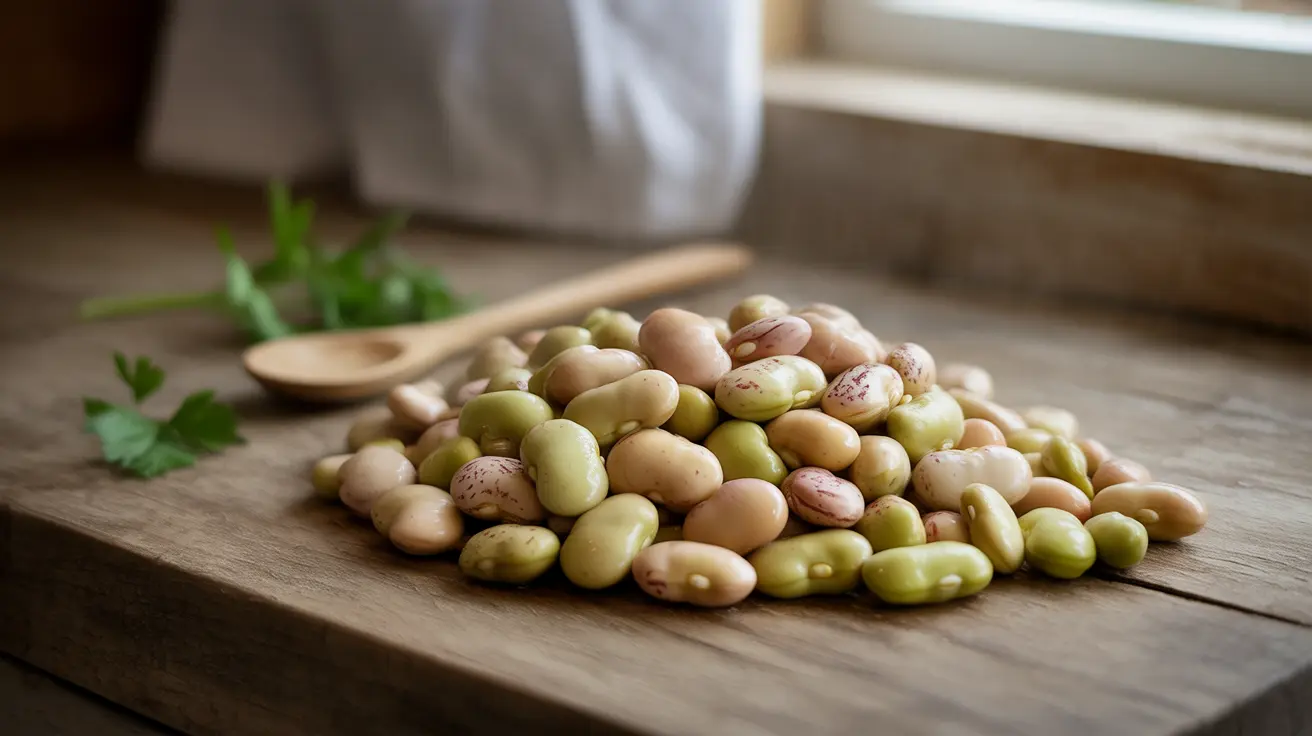Lima beans, also known as butter beans, are remarkable legumes that pack an impressive nutritional punch. These creamy, buttery-textured beans have been a staple food in many cultures for centuries, offering a wide array of health benefits that make them an excellent addition to any balanced diet.
Whether you're looking to improve your heart health, manage blood sugar levels, or enhance your overall nutrition, lima beans provide a versatile and nutrient-dense option that deserves a place on your plate. Let's explore the many benefits these remarkable legumes have to offer.
Nutritional Profile of Lima Beans
Lima beans are incredibly rich in essential nutrients that support overall health and wellness. A single cup of cooked lima beans provides:
- 12 grams of protein
- 13 grams of dietary fiber
- Important minerals including iron, magnesium, and potassium
- B vitamins, particularly folate
- Negligible fat content
- Complex carbohydrates
This impressive nutritional profile makes lima beans an excellent choice for those seeking to improve their dietary intake of essential nutrients while maintaining a healthy weight.
Heart Health Benefits
The combination of nutrients in lima beans makes them particularly beneficial for cardiovascular health. Their high fiber content helps reduce cholesterol levels, while their potassium content supports healthy blood pressure regulation.
The folate in lima beans also plays a crucial role in heart health by helping to reduce homocysteine levels in the blood, a factor associated with increased risk of heart disease.
Blood Sugar Management
Lima beans have a low glycemic index and are rich in both protein and fiber, making them an excellent food choice for blood sugar control. The combination of these nutrients helps slow down digestion and prevents rapid spikes in blood glucose levels.
Weight Management and Digestive Health
The high fiber and protein content of lima beans makes them particularly effective for weight management. These nutrients promote feelings of fullness and satisfaction, helping to reduce overall calorie intake throughout the day.
Supporting Digestive Health
The fiber in lima beans supports a healthy digestive system by:
- Promoting regular bowel movements
- Feeding beneficial gut bacteria
- Helping prevent constipation
- Supporting overall digestive health
Safe Preparation and Consumption
Proper preparation of lima beans is essential to ensure both safety and optimal nutrition. Raw lima beans contain compounds that can be harmful if not properly prepared. Here's how to prepare them safely:
- Soak dried lima beans for 8-12 hours before cooking
- Drain and rinse thoroughly
- Cook in fresh water until tender
- Ensure they're completely cooked through before consuming
When properly prepared, lima beans are safe to eat and can be incorporated into a variety of dishes, from soups and stews to salads and side dishes.
Frequently Asked Questions
What are the nutritional benefits of eating lima beans?
Lima beans are rich in protein, fiber, vitamins, and minerals. They provide essential nutrients including iron, magnesium, potassium, and folate, while being low in fat and containing complex carbohydrates that support sustained energy levels.
How do lima beans support heart health and blood sugar control?
Lima beans support heart health through their high fiber content, which helps lower cholesterol, and potassium, which aids in blood pressure regulation. Their low glycemic index and combination of fiber and protein help maintain stable blood sugar levels.
Can lima beans help with weight management and digestive health?
Yes, lima beans are excellent for weight management due to their high fiber and protein content, which promotes satiety. They also support digestive health by providing prebiotic fiber that feeds beneficial gut bacteria and promotes regular bowel movements.
Are there any risks or side effects associated with eating lima beans?
Raw lima beans contain compounds that can be harmful, but these are neutralized through proper cooking. Some people may experience digestive discomfort when first increasing their intake of fiber-rich foods like lima beans. Start with small portions and increase gradually.
How should lima beans be prepared to ensure they are safe to eat?
To prepare lima beans safely, soak dried beans for 8-12 hours, drain and rinse them thoroughly, then cook in fresh water until completely tender. Never consume raw lima beans, and always follow proper cooking instructions to ensure safety.




